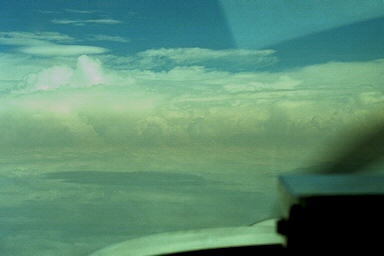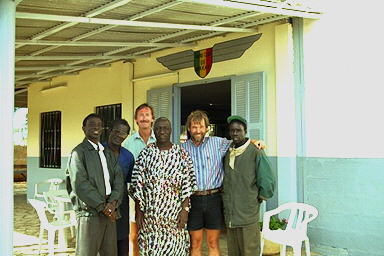Natal to Dakar
Natal, Brazil, 17. January 1997. According to the weather office in Recife, both the winds aloft (at FL 180 at least!) and the ITCZ (Inter Tropical convergence Zone) looked OK for a non-stop crossing from Natal to Dakar, Senegal.
'Honey Mooney' is getting all her five fuel tanks filled up.We took off the following morning at 4 am after 2 hours delay due to bureaucratic problems with the ATC clearance.

 Fernando de Noronha, 19 January 97: John (co-pilot Rio - Geneva) is
filling up the four 20-litre plastic containers with AVGAS from the wing tanks. We took
off for Dakar the following morning at sunrise.
Fernando de Noronha, 19 January 97: John (co-pilot Rio - Geneva) is
filling up the four 20-litre plastic containers with AVGAS from the wing tanks. We took
off for Dakar the following morning at sunrise.  Position 04°N 026°W facing the ITCZ
Position 04°N 026°W facing the ITCZ 